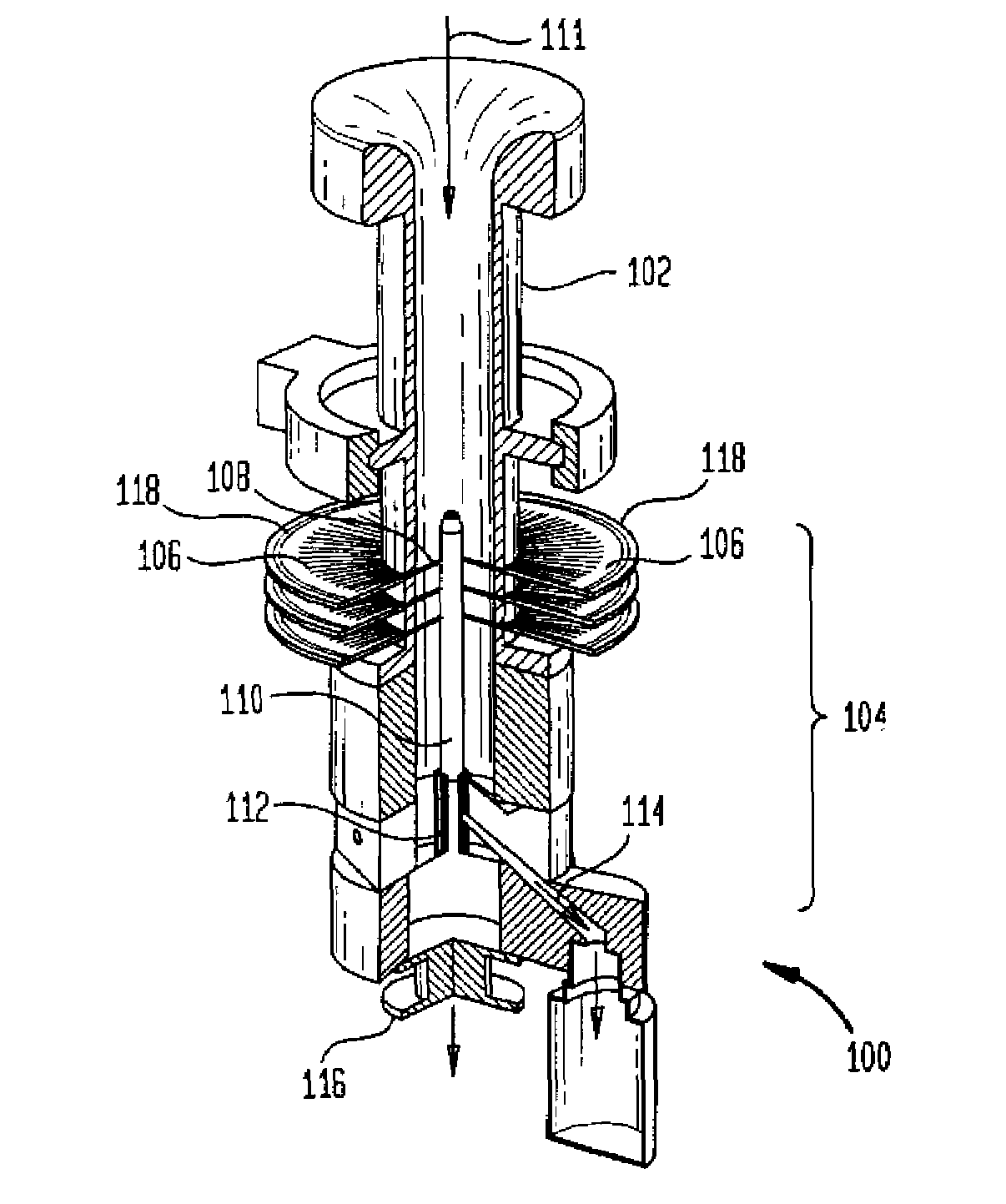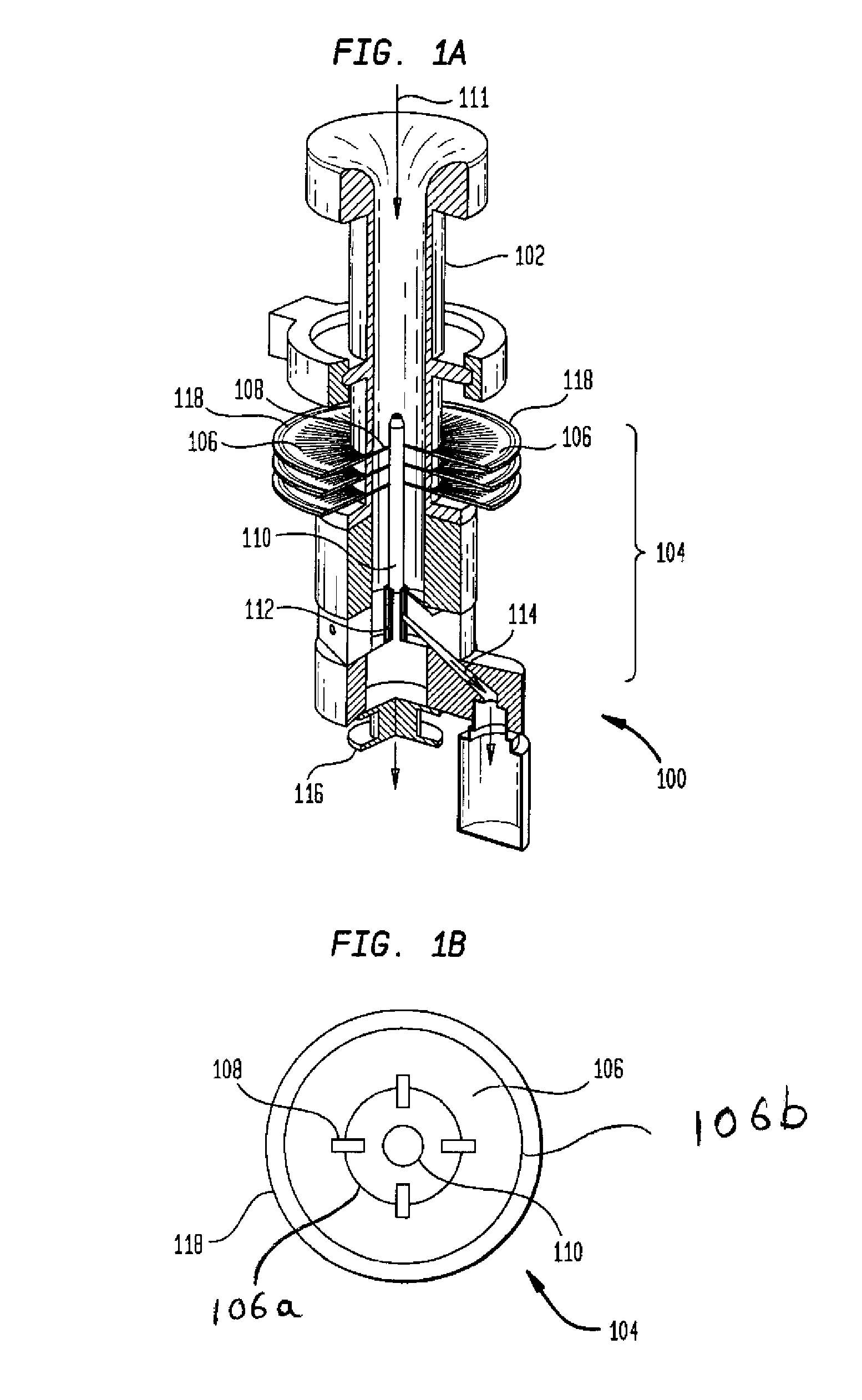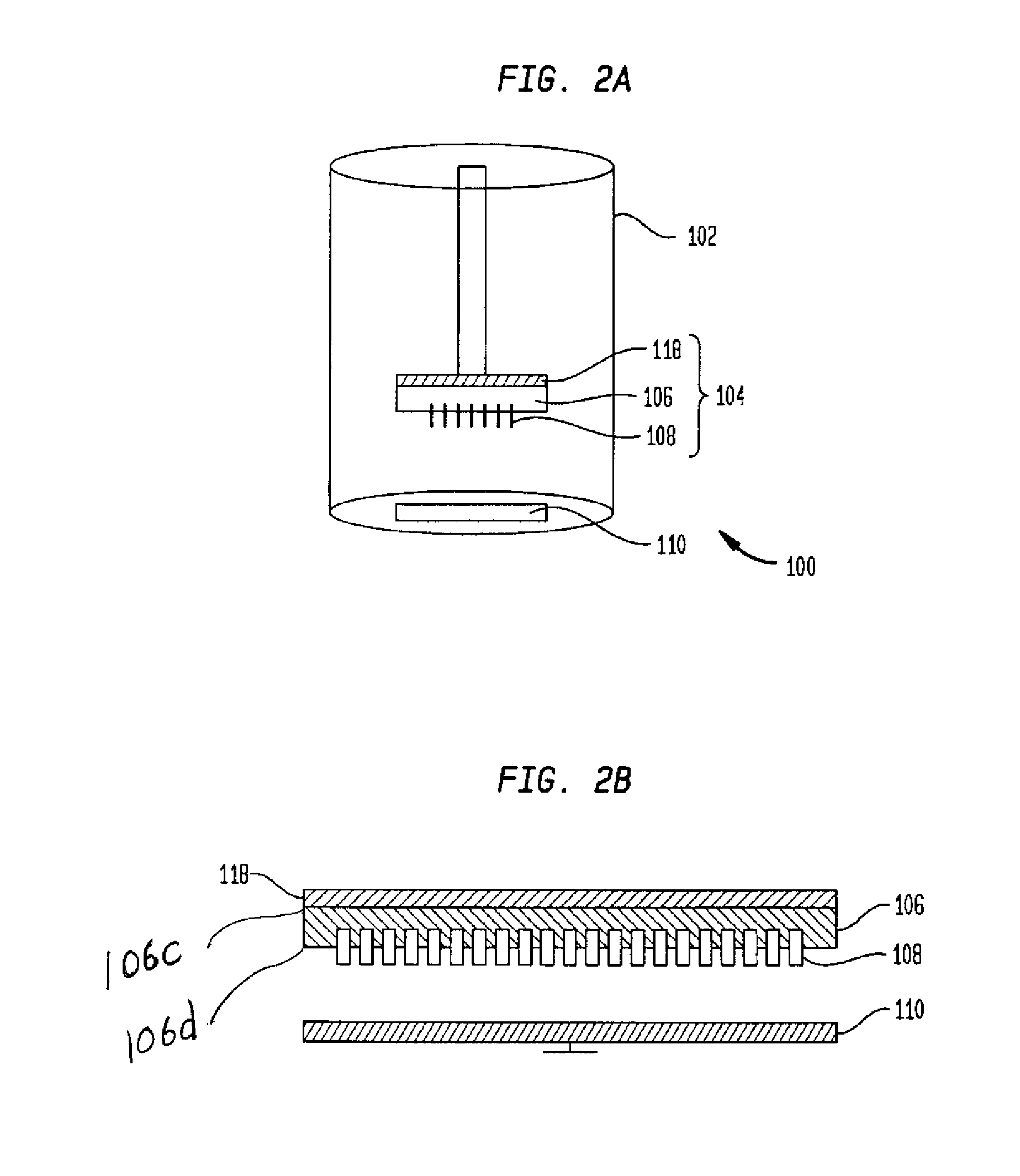Ballast circuit for electrostatic particle collection systems
a particle collection and electrostatic technology, applied in the field of electrostatic particle collection systems, can solve the problems of non-uniform plasma that would defeat the primary benefits of a multiple electrode corona discharge system, power through a single electrode is limited, and breakdown and resistance values are not usually in high demand for most electrical applications
- Summary
- Abstract
- Description
- Claims
- Application Information
AI Technical Summary
Benefits of technology
Problems solved by technology
Method used
Image
Examples
Embodiment Construction
[0017]As will be described in greater detail below, a conductive plastic material has been shown to meet the requirements for the resistive ballasting of multi-electrode corona discharge arrays. Typical ballast resistor electrical requirements are resistance greater than or equal to 10.sup9 ohm and voltage breakdown of greater than or equal to 10 kV across the terminals. Conductive plastics possess a unique combination of material properties that enable its use for this application. Use of this material will substantially reduce the cost to manufacture multi-electrode corona discharge arrays where a large number (i.e. >10 electrodes) of discharge elements is required.
[0018]Furthermore, using a conductive plastic as the resistive element of a multi-electrode ballast circuit enables a large number of circuit designs and geometries that can be used to accommodate the variations of particle collection geometry. A brief description of the multi-electrode ballast circuit for cylindrical a...
PUM
| Property | Measurement | Unit |
|---|---|---|
| distance | aaaaa | aaaaa |
| distance | aaaaa | aaaaa |
| voltage breakdown | aaaaa | aaaaa |
Abstract
Description
Claims
Application Information
 Login to View More
Login to View More - R&D
- Intellectual Property
- Life Sciences
- Materials
- Tech Scout
- Unparalleled Data Quality
- Higher Quality Content
- 60% Fewer Hallucinations
Browse by: Latest US Patents, China's latest patents, Technical Efficacy Thesaurus, Application Domain, Technology Topic, Popular Technical Reports.
© 2025 PatSnap. All rights reserved.Legal|Privacy policy|Modern Slavery Act Transparency Statement|Sitemap|About US| Contact US: help@patsnap.com



